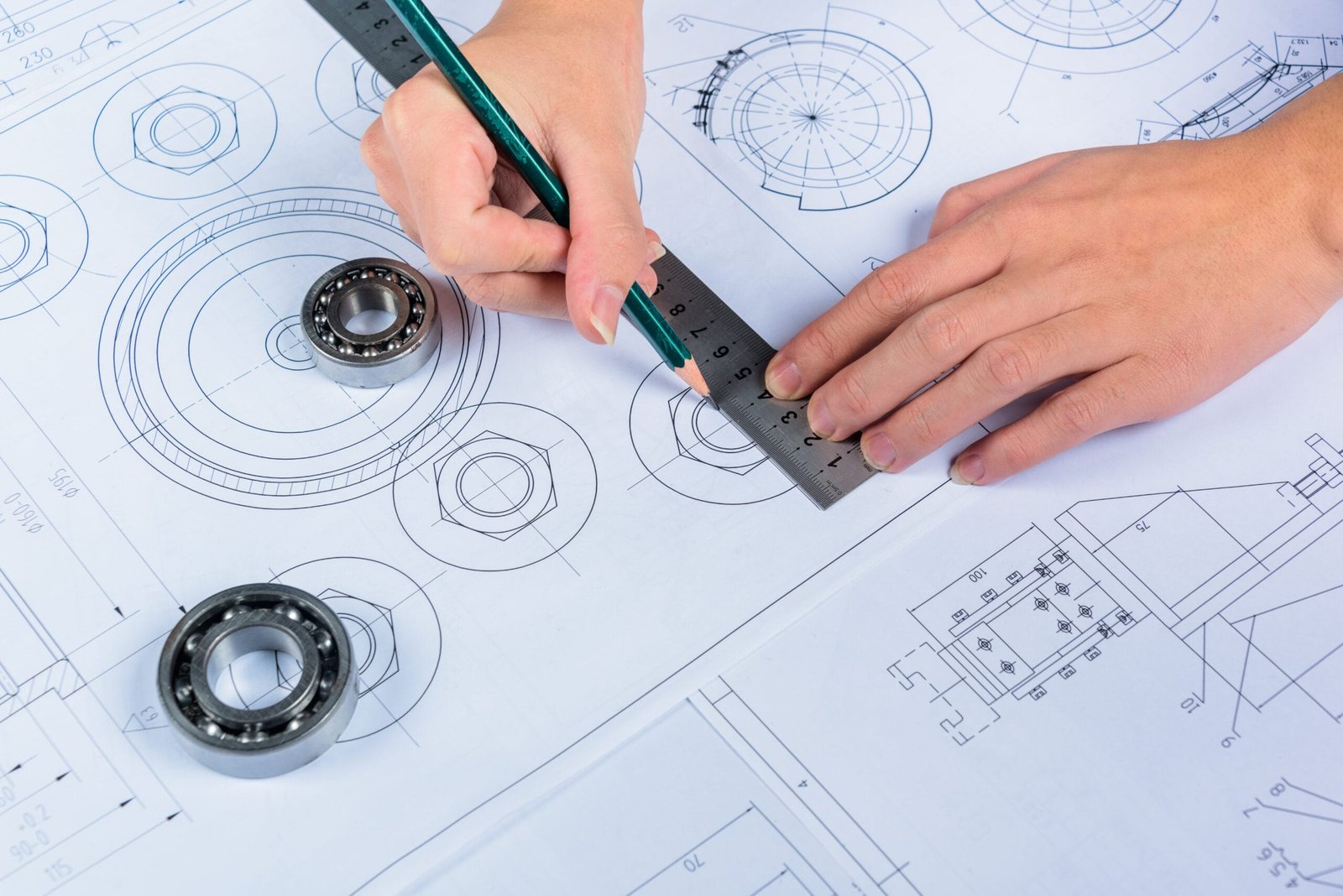Interior design is evolving at a rapid pace, and technology has become a game changer in the way spaces are visualized, planned, and executed. One technology that has transformed the industry is 3D rendering. This blog post for Designhok will take you through what 3D rendering in interior design is, how it works, its benefits, and why it has become an indispensable tool for designers, architects, and homeowners alike.
Understanding 3D Rendering in Interior Design
At its core, 3D rendering is the process of creating a two-dimensional image or animation from a 3D model. In interior design, this means turning design ideas into realistic visualizations. Designers use sophisticated software to craft detailed representations of spaces, complete with textures, lighting, and materials that mimic real-life conditions. This allows clients and designers to see exactly how a space will look once the design is complete, even before any physical work begins.
What is 3D Rendering in Interior Design bridges the gap between imagination and reality. It takes flat sketches or conceptual ideas and transforms them into vibrant, lifelike images that accurately reflect the final design. This digital representation enables designers to experiment with different layouts, color schemes, lighting, and textures, ensuring that every element works in harmony to create a cohesive space.
The Process Behind 3D Rendering
What is 3D Rendering in Interior Design process typically involves several stages:
- Conceptualization and Design Brief: The journey begins with understanding the client’s needs, preferences, and the overall design concept. Designers gather inspiration, create mood boards, and sketch initial ideas.
- Modeling: Using specialized software, designers build a digital model of the space. This model includes walls, floors, ceilings, furniture, fixtures, and other design elements. The level of detail in this phase can vary depending on the complexity of the project.
- Texturing and Material Application: Once the model is complete, materials and textures are applied. Designers choose finishes like wood grains, fabrics, and metals to replicate real-world surfaces. This step is crucial because realistic textures can significantly enhance the overall visual appeal of the rendered image.
- Lighting and Environment Setup: Lighting plays a pivotal role in interior design. Designers carefully set up artificial lighting, natural light sources, and ambient effects to simulate how light interacts with different surfaces. This helps in showcasing the space under various conditions, such as daytime, evening, or night settings.
- Rendering: The prepared model is then processed by rendering software. This stage converts the detailed 3D model into a high-quality 2D image or animation. The rendering quality depends on factors like resolution, lighting effects, and the complexity of the scene.
- Post-Production: In some cases, further enhancements are done using photo editing software to fine-tune colors, contrast, or add special effects. This step ensures that the final image is polished and meets the designer’s vision.
Benefits of What is 3D Rendering in Interior Design
Enhanced Visualization
3D rendering allows both designers and clients to visualize a space long before it comes to life. Instead of relying on traditional blueprints or 2D sketches, 3D visuals provide a realistic preview, making it easier to understand spatial relationships and design elements.
Improved Communication
Accurate What is 3D Rendering in Interior Design help bridge the communication gap between clients and designers. They serve as a common language that both parties can understand, ensuring that the envisioned design aligns with the client’s expectations. Changes can be discussed and implemented more efficiently, reducing misunderstandings and costly revisions during the construction phase.
Experimentation and Flexibility
With 3D rendering, the experimentation process is both risk-free and cost-effective. Designers can easily test various configurations, materials, and color schemes without having to physically alter the space. This flexibility means that mistakes or changes in direction can be managed early on in the design process.
Time and Cost Efficiency
Investing in 3D rendering upfront can lead to significant savings later. By identifying potential issues before construction begins, designers can avoid costly errors. Additionally, a well-rendered model speeds up the decision-making process, ensuring that projects remain on schedule.
Marketing and Client Engagement
High-quality 3D renderings are powerful marketing tools. They allow designers to showcase their work in portfolios, on websites, or during client presentations. Realistic visualizations create a lasting impression, helping clients envision the potential of their space and feel more connected to the project.

Tools and Technologies Behind 3D Rendering
Several software programs are popular in the field of What is 3D Rendering in Interior Design and interior design:
- Autodesk 3ds Max: Widely used for its robust modeling and rendering capabilities, particularly in high-end visualization projects.
- SketchUp: Known for its user-friendly interface, SketchUp is a favorite among interior designers for creating quick and effective 3D models.
- V-Ray: A powerful rendering engine that integrates with various 3D modeling software to produce photorealistic images.
- Corona Renderer: Valued for its ease of use and high-quality output, Corona is another excellent choice for interior renderings.
- Lumion: Favored for its real-time rendering capabilities, Lumion helps designers create interactive and dynamic visualizations.
Each tool has its strengths, and the choice often depends on the specific needs of the project, the designer’s familiarity with the software, and the desired level of realism.
Real-Life Applications and Case Studies
Consider a scenario where a homeowner wants to redesign their living room. With traditional methods, they might have to rely on sketches or mood boards, which can leave room for misinterpretation. However, with 3D rendering, the designer can create a detailed model of the living room, complete with proposed furniture, lighting schemes, and material finishes. The homeowner can then see a realistic preview of their future space and provide feedback, ensuring that the final design meets their expectations.
Another example is in commercial spaces such as restaurants or boutique hotels, where ambiance plays a critical role in customer experience. Designers use What is 3D Rendering in Interior Design to experiment with lighting, color schemes, and spatial layouts to create an inviting environment that aligns with the brand’s identity. This not only improves the design process but also enhances the overall customer experience once the project is completed.

The Future of 3D Rendering in Interior Design
As technology continues to advance, the potential of What is 3D Rendering in Interior Design in interior design grows exponentially. Virtual Reality (VR) and Augmented Reality (AR) are beginning to integrate with 3D rendering, allowing clients to immerse themselves in a space in real time. Imagine being able to virtually walk through your future home or office and make adjustments on the fly!
Moreover, as rendering software becomes more efficient and accessible, even small design firms and independent designers can produce high-quality visualizations. The democratization of these tools promises a future where every design project can benefit from the precision and flexibility of 3D rendering.
Frequently Asked Questions (FAQ)
1. What is 3D rendering in interior design?
3D rendering in interior design is the process of creating a two-dimensional image or animation from a three-dimensional model of a space. It involves using software to simulate lighting, textures, and materials to produce realistic visualizations of a design concept.
2. How does 3D rendering benefit interior design projects?
3D rendering offers enhanced visualization, improved communication between designers and clients, flexibility in experimenting with different design elements, time and cost savings, and serves as a powerful marketing tool by providing realistic previews of the final space.
3. What software is commonly used for 3D rendering in interior design?
Some of the most popular software includes Autodesk 3ds Max, SketchUp, V-Ray, Corona Renderer, and Lumion. The choice depends on the project requirements and the designer’s familiarity with the software.
4. Can 3D rendering help in reducing project costs?
Yes, by identifying potential design issues early in the planning phase, 3D rendering helps avoid costly mistakes during construction or implementation. It also speeds up the decision-making process, ensuring that projects remain on schedule.
5. Is 3D rendering only for large-scale projects?
Not at all! 3D rendering is beneficial for projects of all sizes, from small residential renovations to large commercial developments. Its flexibility makes it a valuable tool regardless of the project scale.
6. How long does it take to create a 3D rendering?
The time required depends on the complexity of the project, the level of detail needed, and the designer’s expertise. A simple interior design rendering might take a few days, whereas more complex projects could take several weeks to perfect.
7. Will 3D rendering replace traditional design methods?
While What is 3D Rendering in Interior Design is a powerful tool, it is meant to complement traditional design methods rather than replace them. It enhances the design process by providing additional insights and a clearer visualization of the final outcome.
Conclusion
3D rendering has revolutionized the interior design industry by turning abstract ideas into tangible, photorealistic visuals. It not only helps designers and clients visualize the final product with precision but also streamlines communication and enhances the decision-making process. As technology continues to evolve, the capabilities of 3D rendering will expand even further, making it an indispensable tool in creating modern, functional, and aesthetically pleasing spaces.
At Designhok, we are excited about the possibilities that 3D rendering offers and are committed to leveraging this technology to bring your dream spaces to life. Whether you’re planning a home renovation or designing a commercial space, embracing 3D rendering is a step toward achieving design excellence.





